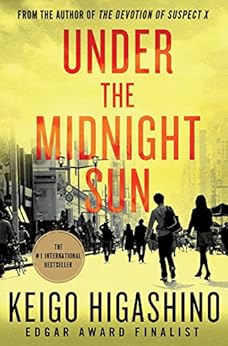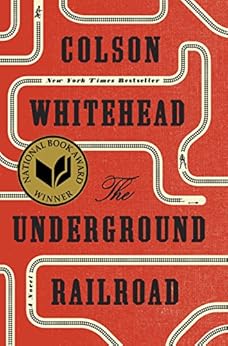Today, January 27, is International Holocaust Remembrance
Day, an international memorial day which commemorates the genocide that
resulted in the deaths of millions.
Here
are some titles from Schatje’s Shelves which fit the category of Holocaust
literature and would be appropriate reading for such a sad commemoration.
(I prepared this list last year.
The title in bold is a book I read in the
last year.)
The Zookeeper's Wife
- Diane Ackerman
This is the true story about the keepers of the Warsaw Zoo
who saved hundreds of people from Nazi hands.
Katerina - Aharon
Appelfeld
This is the story of Katerina, a Polish housekeeper who
works for a succession of Jewish families in the years before WW II. Raised in a culture permeated with virulent
anti-Semitism, she must constantly try to overcome the prejudice instilled by
her bitter mother, who beat her, and her callous father, who attempted to rape
her.
A Time to Choose - Martha Attema
Sixteen-year-old Johannes van der Meer’s homeland of Holland
has been occupied by the Nazis for four years.
While enduring food shortages and nightly air raids, the people of the
Netherlands wait patiently for liberation, but for Johannes the struggle to
endure is full of bitterness. The fact
that his father is a Nazi collaborator has made outcasts of the entire family.
The Nazi Officer's
Wife: How One Jewish Woman Survived the Holocaust - Edith Hahn Beer
Edith Hahn was an outspoken young woman in Vienna when the
Gestapo forced her into a slave labour camp. When she returned home months
later, she went underground and then emerged in Munich as Grete Denner. There
she met Werner Vetter, a Nazi Party member who fell in love with her and
married her though he knew she was Jewish. Edith recalls a life of constant
fear. She created a remarkable record of
survival, saving every document, as well as photographs she took inside labour
camps - now part of the permanent collection at the Holocaust Memorial Museum
in Washington, D.C.
The Seamstress -
Sara Tuval Bernstein
She was born into a large family in rural Romania and grew
up feisty and willing to fight back physically against anti-Semitism from other
schoolchildren. She defied her father' s orders to turn down a scholarship that
took her to Bucharest, and got herself expelled from that school when she
responded to a priest/teacher' s vicious diatribe against the Jews by hurling a
bottle of ink at him. After a series of
incidents that ranged from dramatic escapes to a year in a forced labor
detachment, Sara ended up in Ravensbruck, a women' s concentration camp.
The Hiding Place -
Corrie Ten Boom
Corrie ten Boom was a leader in the Dutch Underground during
WWII. With the aid of her family, she hid scores of Jews from the Nazi
invaders. She was arrested along with every member of her family, spending the
remaining war years in concentration camps.
This Way for the Gas,
Ladies and Gentlemen - Tadeusz Borowski
Tadeusz Borowski’s concentration camp stories were based on
his own experiences surviving Auschwitz and Dachau. He describes a world where
the will to survive overrides compassion and prisoners eat, work and sleep a
few yards from where others are murdered; where the difference between human
beings is reduced to a second bowl of soup, an extra blanket or the luxury of a
pair of shoes with thick soles; and where the line between normality and abnormality
vanishes.
The Boy in the Striped
Pajamas - John Boyne
Bruno is a nine-year-old German boy whose family moves to
Out-With where everyone calls his father Commandant. Bruno hates his new home which is near a
high-wired compound inhabited by sad looking people in striped pajamas.
Daniel Half Human
- David Chotjewitz
At the dawn of Hitler's rise to power in Germany in 1933,
Daniel and Armin swear eternal brotherhood by slitting their wrists and
mingling their blood. Then, with the
scar on his wrist still healing, Daniel receives some life-altering news: he is
half-Jewish and, as such, half-hated by a growing number of neighbours,
teachers, and friends. Quickly, he decides to keep his identity a secret,
conspiring with Armin to join the Hitler Youth.
The Diary of a Young
Girl - Anne Frank
This is the diary of Dutch Jewish teenager, Anne Frank,
written in an Amsterdam warehouse where for two years she hid from the Nazis
with her family and friends.
Rena's Promise: A
Story of Sisters in Auschwitz - Rena Kornreich Gelissen
Sent to Auschwitz on the first Jewish transport, Rena
Kornreich survived the Nazi death camps for over three years. While there she
was reunited with her sister Danka. Each day became a struggle to fulfill the
promise Rena made to her mother when the family was forced to split apart, a
promise to take care of her sister.
Prisoner B-3087 -
Alan Gratz
Yanek Gruener, a Jewish boy in 1930s Poland, is at the mercy
of the Nazis who have taken over. Everything he has and everyone he loves have
been snatched brutally from him. And
then Yanek himself is taken prisoner and forced from one concentration camp to
another, as World War II rages all around him. He encounters evil he could have
never imagined.
Holocaust - Gerald
Green
This book tells the story of the experience of two German
families whose lives intersect at certain points. The Dorfs are
"good" Germans, loyal to the new Nazi regime. The Weiss family is
Jewish, also seemingly "good" Germans, but doomed under the new
regime and its determination to exterminate the Jewish population.
Stones from the River
- Ursula Hegi
The protagonist is a woman named Trudi Montag who has
dwarfism. The book chronicles her life in a village in Germany in the years
before, during, and after World War II.
Mischling – Affinity Konar
Two sisters, identical twins, try to survive Mengele’s
experiments in Auschwitz.
Schindler’s List -
Thomas Keneally
This novel is based on the true story of Oskar Schindler, a
German industrialist who saved more than 1000 Jews from the Nazis at enormous
financial and emotional expense.
The Thought of High
Windows - Lynne Kositsky
Young, Jewish and on the run from the Nazis, Esther is one
of a group of children who manage to flee Germany for Belgium and then France
at the beginning of World War II. Since she is from a more traditionally Jewish
family, Esther is an outcast among the youngsters in her group, many of whom
consider themselves to be "modern Jews." They also tease her about
being overweight.
Child of the Holocaust
- Jack Kuper
This childhood memoir of the Holocaust follows the travels
of eight-year-old Jacob Kuperblum, who comes home one day to find his family
and friends gone, rounded up by the Germans only hours earlier
The Kindly Ones -
Jonathan Littell
The book is narrated by its fictional protagonist Maximilien
Aue, a former SS officer of French and German ancestry who helped to carry out
the Holocaust and was present during several major events of World War II.
Number the Stars -
Lois Lowry
Set in Denmark in 1939, this novel gives an account of the
fears and anxieties of the Danish people, both Jewish and non-Jewish, during
the German occupation.
Daniel’s Story -
Carol Matas
Daniel, 14 in 1941, describes his family's sense of
belonging in Germany and their refusal to flee their country despite the
initial instances of anti-Semitism they experience.
We are Witnesses: Five
Diaries of Teenagers Who Died in the Holocaust - Patricia McKissack
Diary entries written by five Holocaust victims document the
ordeals suffered in Nazi-occupied Lithuania, Hungary, Belgium, and Holland.
Friedrich - Hans
Peter Richter
This is the story of a Jewish boy in Germany during the
1930s. The book tells about the
Holocaust in Germany and the racism against the Jewish people.
Sarah’s Key -
Tatiana de Rosnay
In Paris in July of 1942, Sarah, a ten year-old girl, is
arrested with her family by the French police in the Vel’ d’Hiv’ roundup, but
not before she locks her younger brother in a cupboard in the family's
apartment, thinking that she will be back within a few hours.
Mottele - Gertrude
Samuels
This true-life story tells of Ukrainian-born
Mottele-Mordechai Shlayan--who at age 12 left his childhood behind when his
family was murdered by German soldiers. The young violinist joined the Jewish
partisans--resistance fighters-- to take revenge on their enemies.
The Reader -
Bernhard Schlink
In postwar Germany, fifteen-year-old Michael Berg becomes
the lover of Hanna, a woman twice his age. Then she inexplicably disappears.
When Michael next sees her, he is a young law student, and she is on trial for
a hideous crime. As he watches her refuse to defend her innocence, Michael
gradually realizes that Hanna may be guarding a secret she considers more
shameful than murder.
Maus - Art Spiegelman
This graphic novel tells the story of Vladek Spiegelman, a
Jewish survivor of Hitler’s Europe, and his son, a cartoonist coming to terms
with his father’s story. Maus, by portraying the Nazis as cats and the Jews as
mice, approaches the unspeakable horror of the Holocaust.
Sophie’s Choice -
William Styron
This book concerns the relationships among three people
sharing a boarding house in Brooklyn:
Stingo, a young aspiring writer from the South who befriends the Jewish
Nathan Landau and his lover Sophie, a Polish, Catholic survivor of the German
Nazi concentration camps. The plot
ultimately centers on a tragic decision that Sophie was forced to make on her
entry, with her children, into Auschwitz
The Pianist -
Wladyslaw Szpilman
On September 23, 1939, Wladyslaw Szpilman played Chopin's
Nocturne in C-sharp minor live on the radio as shells exploded outside. It was the last live music broadcast from
Warsaw: That day, a German bomb hit the station, and Polish Radio went off the
air. Though he lost his entire family, Szpilman survived in hiding. In the end,
his life was saved by a German officer who heard him play the same Chopin
Nocturne on a piano found among the rubble.
Night - Elie
Wiesel
This is Wiesel's best-selling memoir/novel of his year spent
in four concentration camps as a 15-year-old during the Holocaust.
The Book Thief -
Markus Zusak
It is 1939 in Nazi Germany.
Liesel Meminger is a foster girl living outside of Munich, who scratches
out a meager existence for herself by stealing when she encounters something
she can’t resist–books. With the help of her accordion-playing foster father,
she learns to read and shares her stolen books with her neighbours during
bombing raids as well as with the Jewish man hidden in her basement.


